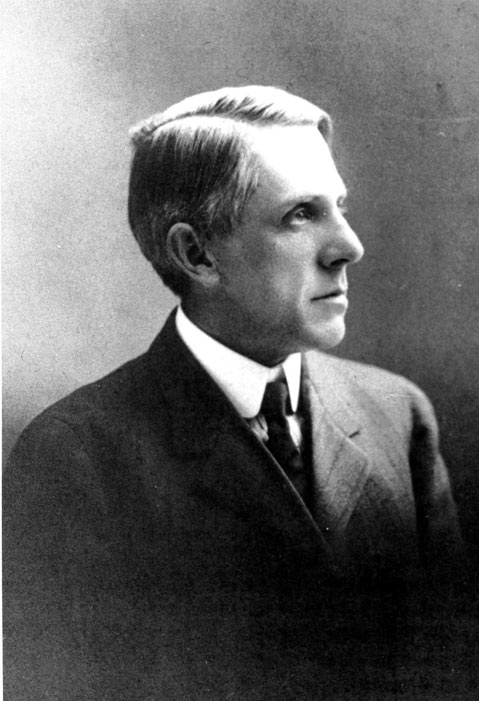Ernest L. Thayer
"Casey at the Bat" Author Ernest L. Thayer Lived in Montecito
“The outlook wasn’t brilliant for the Mudville nine that day.” So begins one of the most famous poems ever penned by an American author. Such was the popularity of the verse, one actor (De Wolf Hopper) made a career and his fortune performing it — some 40,000 times! Yet for much of his life, the poem’s author was ambivalent about his creation before acknowledging toward the end of his life the public’s acclaim. Ernest L. Thayer finally concluded that “Casey at the Bat” was one of the best things he ever wrote.
Early on, Thayer’s academic and intellectual promise seemed unlimited. He was born into a wealthy Massachusetts textile manufacturing family in 1863. He attended Harvard, where he studied under famed philosopher William James, became a member of Phi Beta Kappa, and in his senior year wrote the annual Hasty Pudding play and was editor of the Harvard Lampoon. One of his best friends at Harvard was William Randolph Hearst. And he became a baseball fan.

After graduation, he traveled through Europe before joining his friend Hearst’s newspaper, the San Francisco Examiner in 1886. There, he wrote editorials, humorous columns, verse, and baseball reportage. He left the paper early in 1888 to return to the family business in Massachusetts, but that spring, he wrote one last ballad for Hearst, “Casey at the Bat.” For this, he received all of five dollars.
This piece of doggerel became a sensation, largely through recitations by comic actor Hopper, whose first performance of the poem in August 1888 in New York City caused the audience to go “wild with enthusiasm … It was one of the wildest scenes ever seen in a theatre,” according to one newspaper account. (Hopper married six times; his fifth wife became the famous Hollywood columnist Hedda Hopper.)
Thayer continued working in his family’s successful woolen business, but by 1903, he was semiretired and began traveling extensively. In 1912, he was staying at the Miramar in Montecito when he met Rosalind Buel Hammett, a widow. They married the following year and settled into a home on Hixon Road.
The Thayers became very much a part of the local social scene. During World War I, Rosalind was a leader of the area Red Cross, while Ernest became local publicity chair of three Liberty Loan drives, among other responsibilities. He found he had married into a ready-made family. He became close to Rosalind’s son, Buell, who became the first president of the Santa Barbara Museum of Art and upon whose sons Thayer became a doting grandfather.
Meanwhile, the popularity of “Casey” did not falter. Hopper starred in a movie version in 1916, and another film was later made starring Wallace Beery. Casey even inspired an opera, and today, a statue of the “mighty Casey” graces the Baseball Hall of Fame in Cooperstown, New York. Thayer came to accept the popularity of his poem and took pride in his authorship. In 1935 he attended the 50th anniversary of his Harvard class and was greatly moved by the tribute paid to him as the creator of “Casey.”
Thayer quietly lived out the balance of his life at his Montecito home. He died at age 77 in the summer of 1940. And every baseball fan can identify with the angst reflected in the last line of his poem: “But there is no joy in Mudville — mighty Casey has struck out.”



